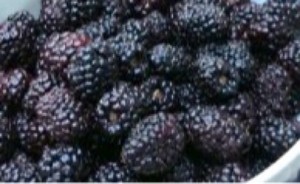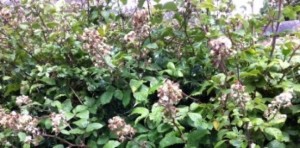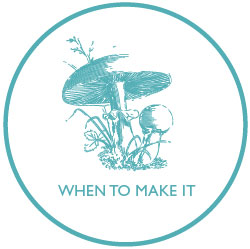SCHOOL HOLIDAY BLACKBERRYING and SAFE FORAGING
Go blackberrying
If there is just one MUST DO OUTING to enjoy with your children in the summer holidays it is to go blackberrying.
By the end of August the hedgerows will be heaving with dark shiny berries and I cannot wait to collect them and then sit back and enjoy a plain bowlful.
And then some for puddings, cheesecakes and crumbles, sauces and coulis, jams and curds and jellies, chutneys and pickles. Endless. I am planning on using one of Beryl’s eighteen recipes using blackberries. The marrow and blackberry chutney is great to offer up with a serving of game or other meat or with a ploughman’s.
BLACKBERRY AND APPLE CHUTNEY
910g (2lb) blackberries
910g (2lb) apples
340g (12 oz) onions
450g (1 lb) brown sugar
570 (1 pint) white vinegar
3 tsp salt
2tsp ground ginger
1 tsp mace
14g ( 1/2 oz ) mustard
Peel, core and rough chop apples, rough chop onions; put in pan with blackberries and vinegar with spices; cook for one hour simmering gently (if you don’t like pips, sieve at this stage); add sugar, bring to boil stirring till dissolved, then cook till thick; pot and cover at once.
FINDING THE BLACKBERRIES
Now is a good time to check out those quiet spots where blackberries can be found and then make them for when the picking time comes.
The National Trust for England post a list of Top spots for picking blackberries
http://www.nationaltrust.org.uk/article-1355803340678/
SAFE FORAGING
Foraging is an activity which is now flourishing but should not be pursued without considerable care and the most important aspect of which must be not to eat anything that you have not identified and are quite sure it is safe to eat. Explaining and reinforcing this advice to your children is where safe foraging starts with the family.
You may have considered a number of plants and berries when taking your country walks.
Nettles, for example, are somewhat scary to collect but make a delicious alternative vegetable when softly boiled. However you should pick them when the leaves are young young and ignore the mature leaves which may irritate the urinary tract. Then there are elderflowers, wild garlic, wild strawberries, mushrooms and many more. All to be clearly identified and correctly used.
There are courses which give guidance on identifying and collecting wild foods. Some are a run for individuals and others for families and children and which you might like to consider attending. See links below for the UK.
There are also Facebook groups which have been set up specifically to help identification. See links below.
Local knowledge is particularly useful in identification.
BASIC RESPONSIBLE GUIDELINES
for would be foragers
Do not eat anything unless you are sure of its identification which should mean cross referencing the plant more than one source.
Do not collect from nature reserves or places or areas set up for the protection of species.
Resist being greedy and do not clear an area of the food. Just pick what you need and allow plants to recover and reseed.
Do not collect from places which are possibly subject to pollution and always wash your harvest well.
FORAGING COURSES
Gourmet foraging www.foragingcourses.com/
Wild Food UK www.wildfooduk.com/
Hunter Gather Cook www.huntergathercook.com
Woodland ways Bushcraft and survival – (full and half days) www.huntergathercook.com
FACEBOOK GROUP LINKS
Forage and Feast – Wild Food Cooking & Preserving
The Frugal Forager
Wild Food identification
Herb, Plant and Foraging identification group
Happy blackberrying and foraging
Pippa







By submitting a comment you grant Let's Preserve It a perpetual license to reproduce your words and name/web site in attribution. Inappropriate and irrelevant comments will be removed at an admin’s discretion. Your email is used for verification purposes only, it will never be shared.